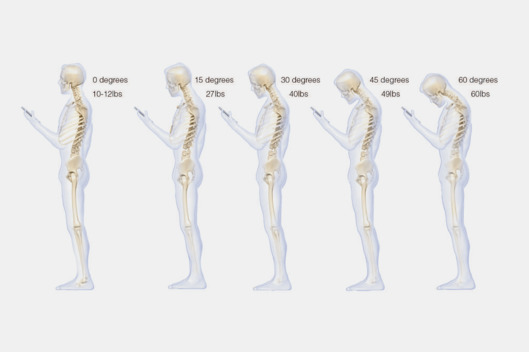The price of connectivity
December 4, 2014
Texting, tweeting, instagramming and snapchatting keep high schoolers attached to their phones for over 5,000 hours a year per teen, according to New York Magazine. Breaking it down, that means over 95 hours a week and almost 13 hours a day. In the short term, smart phones provide immediate entertainment and instant connectivity to the world via social media, however, in the years to come, one may begin to notice the unintended consequences of this guilty pleasure. Spending almost 13 hours a day staring at a phone inevitably strains the human body and eventually, the necks and backs of chronic users will begin to ache.
Students know the exact lull during a class period when their classmates reach into their back pockets, backpacks or desks to check their smartphone and take a quick peek at a text, tweet notification or snapchat waiting for them.
Upon these social media sites has emerged a graphic describing what texting does to your spine created by Dr. Ken Hansraj, the chief of spinal surgery at the New York Spine Surgery and Rehabilitation Facility. It depicts the amount of pressure in pounds put on the spine by every degree one’s head is tilted in order to observe their phone. When one’s head is upright and straight, only about 10-12lbs of pressure are put on the spine, however, as one begins to hunch over, the angle of the neck’s depth increases, in turn, adding to the amount of weight placed on the spine as well. Depending on the degree in which one looks at their phone determines the amount of pressure put on their spine. When one’s head is tilted at a 15 degree angle, 27lbs of pressure are carried. Thirty degrees equals 40 lbs, 40 degrees leads to 49lbs and at a 50 degree angle, one’s spine is carrying about 60 pounds of pressure; about the weight of a nine year-old child sitting on a student’s shoulders.
“Texting has its negative effects but it will only continue to expand; its a too convenient and too private a form of communication, effects like these show we need to alter our mediums for digital communication; products like Heads-Up Displays, which adapt texting to our natural lines of sight are a solution that is already becoming prevalent.” said sophomore Richard Barocas
Smartphones have become a way of life for the majority of people living in the modern-age. Just as society invented and promulgated the use of the smart phone, it will evolve with them toensure their place in our lives remains safe, secure and available 24/7.

Photo By: Kenneth K.Hansraj, MD, Chief of Spine Surgery , New York Spine Surgery & Rehabilitation Medicine










